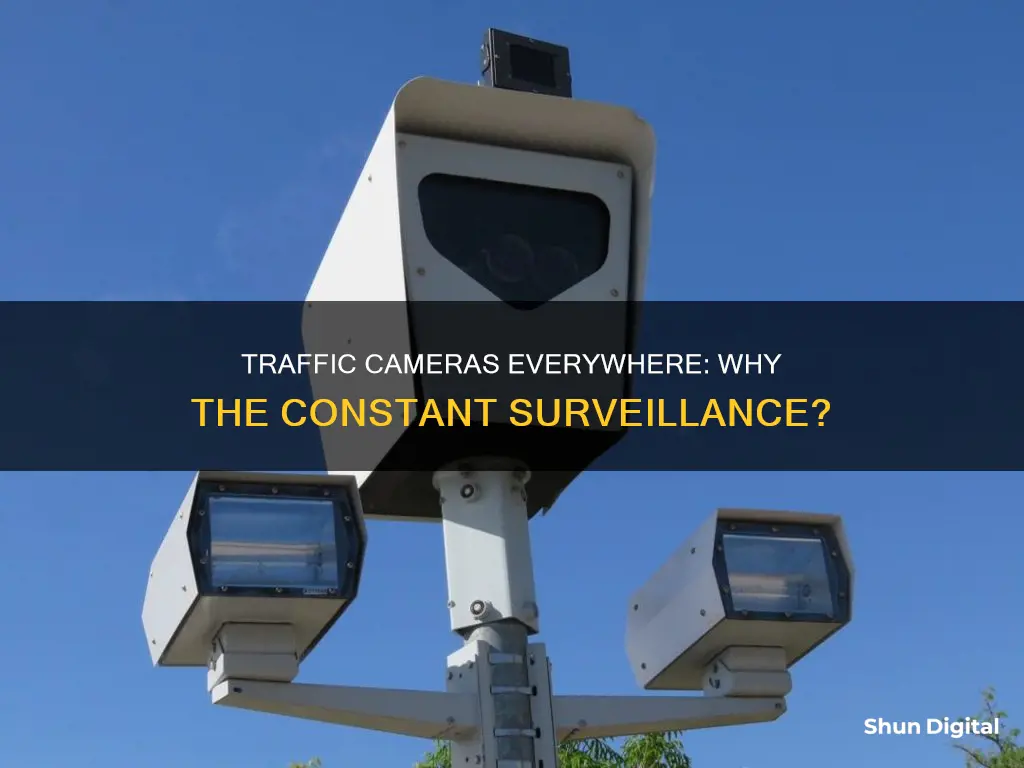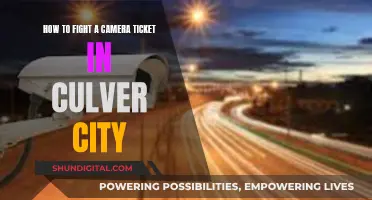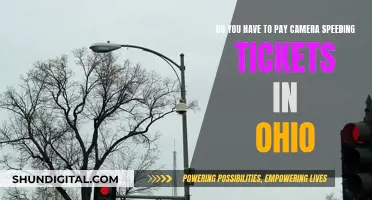
Traffic cameras are an increasingly common sight on roads across the world. These cameras are used for a variety of purposes, including monitoring traffic flow, enforcing speed limits, and improving road safety. While some people argue that these cameras are an invasion of privacy, others highlight their effectiveness in reducing accidents and saving lives. With the data supporting their positive impact on road safety, it's clear why we're seeing more and more traffic cameras installed.
There are several types of traffic cameras, each with its own unique function. For example, red light cameras capture images of vehicles running red lights, while speed cameras detect vehicles exceeding the speed limit. These cameras are usually positioned on traffic lights or poles beside the road, providing a clear view of intersections and ensuring effective monitoring.
In addition to their safety benefits, traffic cameras also offer financial advantages. By reducing accidents and improving road conditions, they contribute to significant cost savings for society. However, the revenue generated from traffic violations is often a contentious issue, with concerns about private companies profiting from these citations.
While traffic cameras have faced legal challenges and public backlash, multiple court rulings have affirmed their legality and constitutionality. As technology advances, we can expect to see more sophisticated traffic camera systems being implemented globally, aiming to create safer roads for everyone.
| Characteristics | Values |
|---|---|
| Purpose | To monitor traffic patterns, detect motoring offences (e.g. speeding, red-light violations, unauthorised use of bus lanes), and improve road safety |
| Number of Types | 6 |
| Locations | Intersections, highways, roads, street lights, traffic lights, traffic signals, bus lanes, toll booths, railway crossings, congestion charge areas |
| Surveillance | Not designed to spy on individuals; used for traffic monitoring and law enforcement |
| Privacy Concerns | Yes |
| Data Retention | A few days to several months, depending on the jurisdiction and purpose |
| Public Opinion | Mixed; some people want them banned, but they are more accepted when they reduce racial profiling and minimise police interactions |
| Safety Impact | Studies show that speed cameras and red-light cameras reduce collisions and traffic-related injuries and fatalities |
| Revenue Generation | Fines from traffic cameras can generate significant revenue for local governments and private companies |
What You'll Learn

To reduce accidents and save lives
Traffic cameras are an increasingly common sight on roads across the world, and for good reason. These cameras are an effective tool to reduce accidents and save lives.
The presence of traffic cameras has been shown to reduce the number of car crashes. A worldwide review of studies found that speed cameras led to an 11% to 44% reduction in "fatal and serious injury crashes". Similarly, the UK Department for Transport estimated that cameras led to a 22% reduction in personal injury collisions and a 42% reduction in people being killed or seriously injured at camera sites. This is further supported by a study in Houston, Texas, which found that red-light cameras reduced collisions by about 28% over seven years.
In addition to reducing accidents, traffic cameras can also help to improve road safety by capturing and enforcing traffic violations. For example, red-light cameras take photographs before, during, and after a vehicle runs a red light, providing clear evidence of the infraction. Speed cameras monitor and enforce speed limits, and are often placed in less populated areas such as back roads or residential areas. By enforcing traffic laws, these cameras can help to deter speeding and reduce the number of accidents.
Another benefit of traffic cameras is that they can provide real-time updates on traffic conditions and aid in incident management. For instance, Florida traffic cameras offer live traffic updates and help manage incidents. This not only helps improve traffic flow but can also assist emergency services in reaching incidents more quickly, potentially saving lives.
While some people may have concerns about privacy and the potential for government surveillance, it's important to note that traffic cameras are not designed for that purpose. In most cases, these cameras only activate when a traffic violation occurs, and the footage is typically stored for a limited period, ranging from a few days to several months.
Overall, the evidence suggests that traffic cameras play a crucial role in reducing accidents and improving road safety, ultimately helping to save lives.
Focusing Your Camera in Low-Light: Infinite Techniques
You may want to see also

To generate revenue for local governments
Traffic cameras are often controversial, with many people opposing their use. However, they can be a significant source of revenue for local governments. While the money generated by traffic cameras can be substantial, only about 20% goes to local governments, with the rest going to private companies that install and own the cameras. Nevertheless, this revenue can still be beneficial for local authorities, who may use it to fund road safety projects or address budget shortfalls.
In 2013, Florida's red-light cameras brought in $52 million, while Cleveland's school zone cameras generated $5.8 million, and Montgomery County's speed cameras netted $16.6 million in 2014. These examples demonstrate the financial impact that traffic cameras can have for local authorities.
The use of traffic cameras has been particularly contentious in the United States, where 32 states have banned speed cameras. Despite this, there are still many communities across the country that utilise these cameras. As of March 2017, 24 states and 426 communities operated red-light cameras, while 12 states and 142 communities used speed cameras.
The revenue generated by traffic cameras can be substantial, but it's important to consider the potential trade-offs. While these cameras can provide funding for local governments, they also carry the risk of increased rear-end collisions and concerns about privacy and due process. Additionally, there is criticism that the placement of cameras may be chosen to maximise revenue rather than improve road safety.
To address some of these concerns, several recommendations have been proposed. One suggestion is to install cameras based on crash statistics rather than solely in low-income or minority neighbourhoods. Another proposal is to allocate the revenue from camera tickets towards road improvements and safety projects rather than police department funds. By implementing these strategies, local governments can balance the need for revenue with the concerns of their constituents.
Restarting Li-ion Camera Battery: Quick Guide
You may want to see also

To reduce the need for police presence
Traffic cameras are becoming more popular as they reduce the need for police presence on the roads. The use of traffic cameras is a divisive issue, with many people disapproving of their use. However, there are several benefits to having traffic cameras.
Firstly, they improve road safety by reducing traffic-related fatalities. A worldwide review of studies found that speed cameras led to an 11% to 44% reduction in fatal and serious injury crashes. The UK Department for Transport estimated that cameras led to a 22% reduction in personal injury collisions and a 42% reduction in people being killed or seriously injured at camera sites.
Secondly, they can help to reduce racial profiling and minimise police-driver interactions. Traffic stops are the most common reason for a police officer to pull over a driver, and Black drivers are disproportionately more likely to be pulled over. Cities with larger Black populations have higher rates of ticketing and revenue collection per capita than cities with smaller Black populations. Therefore, the use of traffic cameras can help to reduce racial tensions and improve community relations.
Thirdly, they free up police resources by reducing the need for police officers to monitor traffic and issue speeding tickets. This means that police officers can be redeployed to more urgent or complex tasks, improving the efficiency of police operations.
In addition, traffic cameras can also help to improve traffic flow and management. They can be used to monitor traffic patterns, identify incidents, and adjust traffic signal timing. This can help to reduce congestion and improve the overall efficiency of the road network.
While there are valid concerns about privacy and the potential for government surveillance, the benefits of traffic cameras in reducing the need for police presence on the roads are significant. They improve road safety, reduce racial profiling, free up police resources, and enhance traffic management.
Avoid Traffic Camera Fines: Tips to Navigate the System
You may want to see also

To monitor traffic patterns
Traffic cameras are often used to monitor traffic patterns and help manage traffic flow. These cameras are usually installed in strategic locations, such as on highways, roads, or street lights, to oversee traffic flow and identify incidents. They can also be used to monitor road conditions, such as in the case of Colorado traffic cam systems.
Traffic sensor cameras are one type of camera used to monitor traffic patterns. These cameras are typically mounted on traffic lights or signals and help to determine the timing of the lights by monitoring the flow of traffic. They are distinct from red light cameras or speed cameras, which are used to enforce traffic laws rather than monitor traffic patterns.
The data collected by traffic cameras can be used to improve traffic management and enhance road safety. For example, the Vermont Agency of Transportation stores snapshots from each camera every five minutes, which are publicly available on their website. This allows the Vermont State Police to access the data in the event of a major crash or Amber Alert. Similarly, the Missouri Department of Transportation (MoDOT) uses traffic cameras to detect the presence of vehicles and adjust the timing of traffic signals accordingly.
In addition to improving traffic flow, traffic cameras can also play a role in reducing racial profiling and minimizing police-driver interactions. A study by Rutgers University found that people were more accepting of traffic cameras if they played a role in addressing these issues. The study suggested that installing cameras based on crash statistics rather than solely in low-income or minority neighbourhoods could help to increase support for these initiatives.
Focusing Your Camera: Tips for Capturing Sharp Images at KSC
You may want to see also

To improve road safety
Traffic cameras are an increasingly common feature on roads across the world, and for good reason. They are an effective tool to improve road safety and reduce accidents and injuries. Here are some ways in which traffic cameras improve road safety:
Reducing Speeding and Red-Light Running
Traffic cameras, particularly speed cameras and red-light cameras, act as a deterrent to dangerous driving behaviours. The presence of these cameras encourages drivers to comply with speed limits and traffic signals, reducing the risk of collisions. Speeding is a major contributor to road accidents, and by monitoring and enforcing speed limits, traffic cameras play a crucial role in enhancing road safety.
Enforcing Traffic Rules
Traffic cameras, such as red-light cameras and speed cameras, are equipped with technology to detect and capture evidence of traffic violations. For example, red-light cameras are triggered when a vehicle runs a red light, capturing photographs and videos of the infraction. This evidence can then be used to issue citations and enforce traffic rules, promoting safer driving.
Monitoring Traffic Flow and Congestion
Basic traffic cameras and surveillance cameras are often used to monitor traffic flow and congestion. By providing real-time updates on traffic conditions, these cameras assist in incident management and help optimise traffic signal timing. This helps to improve the overall efficiency of the road network, reducing the risk of accidents caused by congestion or unexpected traffic flow.
Enhancing Law Enforcement
Traffic cameras serve as a valuable tool for law enforcement agencies. They provide a means to detect and enforce a range of traffic violations, from speeding and red-light running to unauthorised use of bus lanes. This not only reduces the need for potentially dangerous traffic stops but also allows law enforcement officers to focus their efforts on other critical areas, improving overall road safety.
Saving Lives and Reducing Injuries
The primary goal of traffic cameras is to improve road safety, and evidence suggests they are effective in achieving this. Studies have shown that the presence of speed cameras leads to a significant reduction in fatal and serious injury crashes. For example, a review of studies found that speed cameras reduced collisions resulting in injuries by 11% to 44%. Similarly, the British Medical Journal reported that speed cameras effectively reduced accidents and injuries, recommending their wider deployment.
Point-and-Shoot Cameras: Can They Shoot RAW?
You may want to see also
Frequently asked questions
Traffic cameras are rapidly growing in number because they are proven to reduce accidents and save lives. They also save and make money for local governments.
There are six types of traffic cameras, each with its own purpose and controversy: red light cameras, speed cameras, stop sign cameras, school bus cameras, surveillance cameras, and auto-enforcers.
Traffic cameras work by capturing images or videos of vehicles and using sensors to detect violations.
Traffic cameras are usually small boxes or cylindrical devices mounted on poles or traffic lights.







